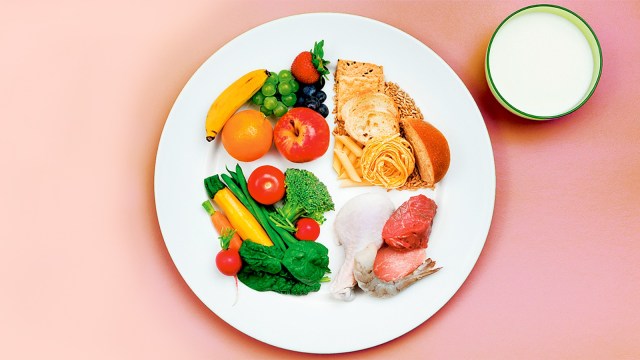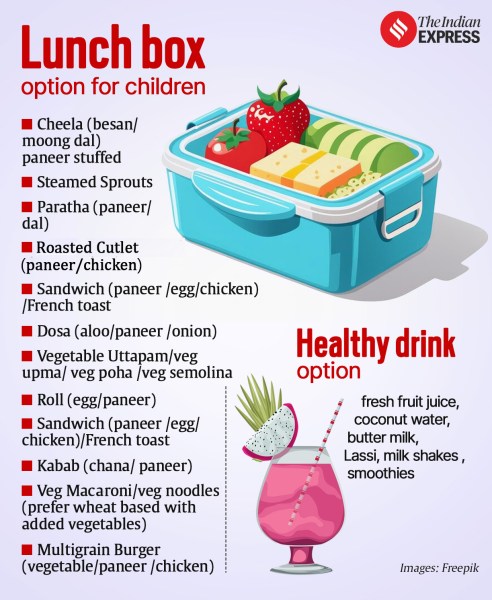The Nestle Cerelac effect: Is that health drink, packaged fruit juice behind your child being overweight?
Parents are overloading kids’ meals with imbalanced diets, fortified foods with misleading labels and added sugars, say experts
 Children aged between one and three years need 13 gm of protein per day. For children between four and eight years, it is 19 gm per day.
Children aged between one and three years need 13 gm of protein per day. For children between four and eight years, it is 19 gm per day. Six-year-old Gungun Sharma’ s daily diet is a classic example of how parents, in their zeal to ensure the best nutrition for their kids, may be unwittingly overfeeding them and triggering childhood obesity. Given the latest row over added sugar in Nestle’s Cerelac and the general unawareness about reading labels of supplements and packaged food, are you giving them more than they can chew? Also, is the child’s home food enough?
Let’s consider Gungun, who weighed 30 kg (about 10 kg overweight) when she walked into the consultation room of Dr Vibhu Kwatra, the paediatrician-pulmonologist at Rainbow Children Hospital at Delhi’s Malviya Nagar. “Her mother told me she had eggs, jam on bread and milk with fortified powder. The child had packaged fruit juices instead of colas during the day, cookies for snacking. She even dribbled ketchup on her sandwiches. And a chocolate piece or two. Despite all the home food her mother was cooking, there was a sugar overload in her diet — added sugars in her health drink, morning cereal, packaged juices, cookies, jams, tomato sauce. No wonder her weight increased, making her sluggish,” says Dr Kwatra. Now the girl has taken up swimming lessons to avoid the risk of developing diabetes in her later years.
DO KIDS NEED HEALTH SUPPLEMENTS?
Any given day, a dal-rice combination is much better, says Dr Karunesh Kumar, paediatric gastroenterologist at Indraprastha Apollo Hospitals, Delhi. Most health drinks and powders, he adds, contain added sugars like sucrose, glucose syrup or honey. “Children fatten up with these easily and are, worryingly, addicted to the sugary flavour profile. You cannot go back to bland foods after it,” he adds.
So what should a parent look for when deciding for a child’s nutrition? Dr Kwatra says that post six months of breastfeeding, a child should be given simple home food items like khichdi, mashed potato, fruits and vegetables, including green vegetables, without any flavouring or seasoning. “This way a child will develop a tendency to eat anything and everything. Don’t over-rely on formula food items,” she says.
WHAT ARE MACRONUTRIENTS A CHILD NEEDS?
Children aged between one and three years need 13 gm of protein per day. For children between four and eight years, it is 19 gm per day. “Lean meats, poultry, fish, eggs, dairy products, legumes and nuts can provide enough protein in a child’s diet,” says Dr Kumar.
Kids over two years old should get 50 to 60 per cent of their calories from carbohydrates, that too from good sources like whole grains, fruits, and vegetables keep added sugar to a bare minimum.
 The lunch box option for children. (Abhishek Mitra)
The lunch box option for children. (Abhishek Mitra)
“Children should get no more than 30 to 35 per cent of their total calories from fat with saturated fat accounting for less than 10 per cent and trans fats avoided entirely,” says Dr Kumar. For a 1,000-calorie diet, this amounts to no more than 30-39 gm of total fat, with only 10 gm coming from saturated sources such as butter, cheese and fatty meats. “Added trans fats from partly hydrogenated oils should be zero grams. High saturated and trans-fat intake can raise heart disease risk factors even in children,” warns Dr Kumar. Instead, children can have unsaturated fats from nuts, seeds, avocados and olive or canola oil. Checking total fat, saturated fat and trans fats on nutrition labels can assist ensure children’s meals comply with the requirements.
“Watch out for chicken nuggets, dairy products, baked goods and snacks, all of which contain surprising amounts of cholesterol. Parents need to look for items that contain less than 60 mg of cholesterol per serving for children and fewer than 100 mg per serving for teenagers,” says Dr Kumar.
WHAT ABOUT CEREALS?
According to Dr Kumar, a child should be given cereals from six months to around 12 months. “After 12 months, they should transition to normal home-cooked food. We recommended that mothers start with 1-4 teaspoons of iron-fortified cereal combined with breastmilk or formula once or twice daily,” he adds.
Children do not need added sugar till two years. After that, they should consume no more than 25 gm (6 teaspoons) of added sugar per day from any source. When it comes to cereals, Dr Kumar experts recommend that young children have no more than 6-9 gm of total sugars per serving, while older children and adolescents consume no more than 12 gm per serving. Cereals with higher amounts can contain too many calories and raise blood sugar levels.
HOW TO READ FOOD LABELS?
“Pay close attention to serving sizes appropriate for the child’s age. Limit total sugars to less than 10-12 gm per serving, choose higher fibre (at least 3 gm per serving), lower saturated fat and sodium content, and ensure the product provides at least 10-20 per cent of daily values for nutrients like iron, zinc, calcium and vitamins that aid growth and development,” advises Dr Kumar.
Managing childhood obesity depends a lot on parental behaviour too. “Rather than focussing on the child’s weight, focus on family eating habits and physical activities. Encourage children and teens to eat only when hungry, eat slowly. Make snacking about fruits and vegetables,” advises Dr Kwatra.



- 01
- 02
- 03
- 04
- 05




























